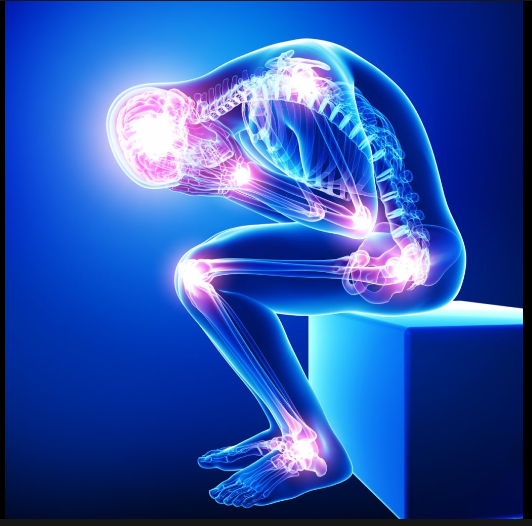Millions suffer from fibromyalgia, a painful and chronic condition.
According to Sharon Waldrop, vice president of the National Fibromyalgia and Chronic Pain Association, it is misinterpreted by both the general public and some medical professionals. One common misperception about it is that the pain and exhaustion it causes are imaginary, created only in the mind of the sufferer.
“I was diagnosed in 1996 at the age of 24,” states Waldrop, who founded the Michigan IT Association. Within months, I went from being extremely active to bedridden. Doctors continue to tell patients that fibromyalgia is not real.” According to her, this happens despite the fact that fibromyalgia is accepted by the World Health Organization, the American Medical Association, the National Institutes of Health, and other reputable medical organizations. As per the National Fibromyalgia Association, the disorder is actually one of the most prevalent pain conditions. The NFA estimates that 10 million Americans suffer from fibromyalgia. Women are more likely than men to suffer from the chronic illness; between 75 and 90 percent of fibromyalgia sufferers are female.
Also read-Psoriatic Arthritis : A Patient’s Guide To Psoriatic Arthritis And Its Symptoms

Research suggests it can also affect children, says Lynne Matallana, founder and president of the NFA. In the past, some it symptoms have been classified as “growing pains,” she says. “With more knowledge and new research, we now know that some children as young as seven going into their teens can be diagnosed with juvenile fibromyalgia.”
What is fibromyalgia?
According to the Mayo Clinic, fibromyalgia “is a disorder characterized by widespread musculoskeletal pain accompanied by fatigue, sleep, memory, and mood issues.” According to research, it may intensify painful experiences by altering how the brain interprets pain signals, according to Matallana. The disorder can cause debilitating symptoms that flare up and go away.

Diagnosis
Dr. Robert Bolash, a pain management specialist at the Cleveland Clinic, states that “fibromyalgia is a clinical diagnosis, meaning that there is no blood test, imaging study, or electro-diagnostic modality that tells either the clinician or the patient that they have the disease.” “We don’t recommend patients undergo extensive diagnostic testing if their symptoms are suggestive of fibromyalgia.”
Before making this diagnosis, doctors must first rule out any other conditions that could be causing the patient’s pain. Subsequently, a physician would determine if the symptoms have persisted for a minimum of three months, which is a prerequisite for diagnosing it. Finally, we compute a symptom severity score as well as an index for widespread pain. The symptoms severity scale evaluates how much the pain syndrome has affected fatigue, waking up tired, and cognitive symptoms, while the widespread pain index looks for several body areas where the patient has experienced pain in the previous week.” To determine whether a patient has it, doctors would add up the scores of these three measurements and classify them as mild, moderate, or severe.
Symptoms
Here are some typical symptoms of it, says Dr. Maria Wilson, senior medical director of Oak Street Health, which has more than 50 primary care centers nationwide and is headquartered in Chicago:

- Widespread pain and stiffness that moves around different body sites.
- Listlessness and fatigue.
- Trouble sleeping.
- Memory problems.
- Concentration problems.
- Digestive problems (diarrhea or constipation)
- Headaches.
- Morning stiffness.
- Tingling in fingers and toes
- Depression and/or anxiety
Causes
Wilson claims that the etiology of fibromyalgia is unclear. “There appears to be a triggering event that initiates the syndrome,” says Wilson. Stress on the body or emotions may be involved. Pain is amplified as a result of the altered communication between the body and the brain and spinal cord. Stated differently, the constellation of symptoms associated with fibromyalgia is a result of the altered way in which the affected person experiences pain.”

It is plausible that the disorder stems from issues related to the body’s processing of pain signals in the brain and spinal cord. It may result in heightened pain sensitivity not seen in the general population, according to Bolash.
Treatments
There’s no cure for fibromyalgia, “but there’s definitely a lot that people can do to live better with fibromyalgia.” Waldrop says. “The people I know who are thriving with fibromyalgia are using a multi-disciplined approach to managing their illness. She recommends working with a doctor or health coach knowledgeable about fibromyalgia to develop the best combination of strategies for you. Joining a support group for people living with fibromyalgia can be helpful.

Also read-Bursitis : A Patient’s Guide To Bursitis And Its Symptoms
images source: Google
Disclaimer: The opinions and suggestions expressed in this article are solely those of the individual analysts. These are not the opinions of HNN. For more, please consult with your doctor.




































